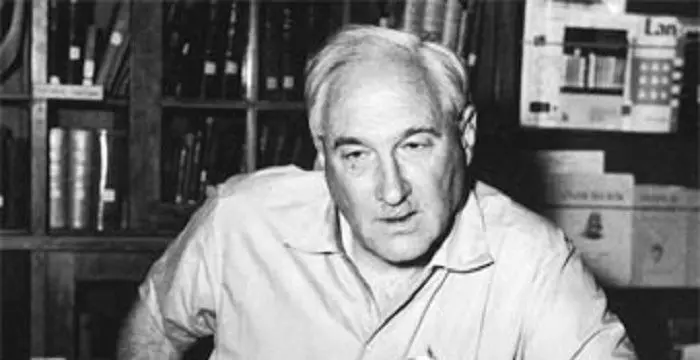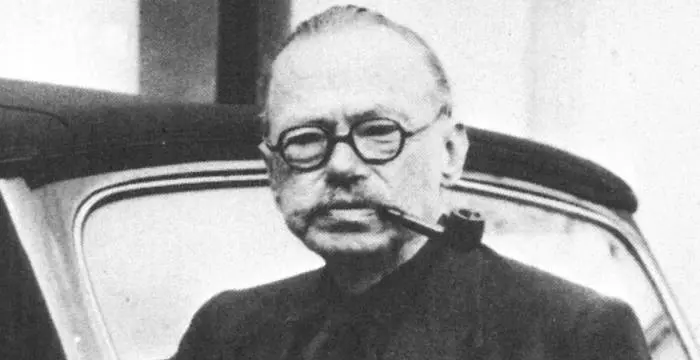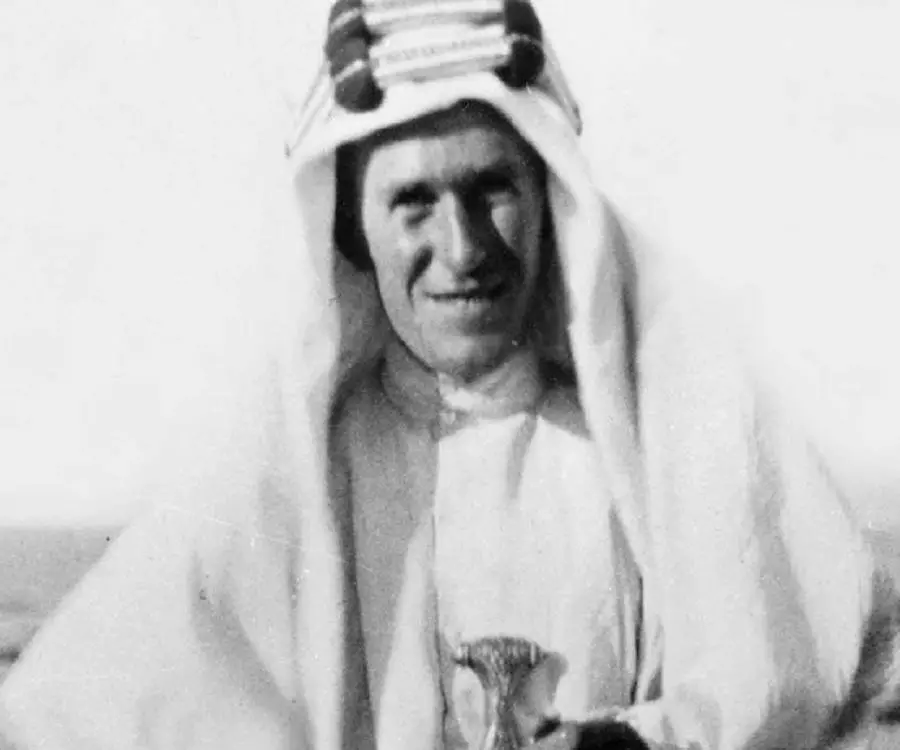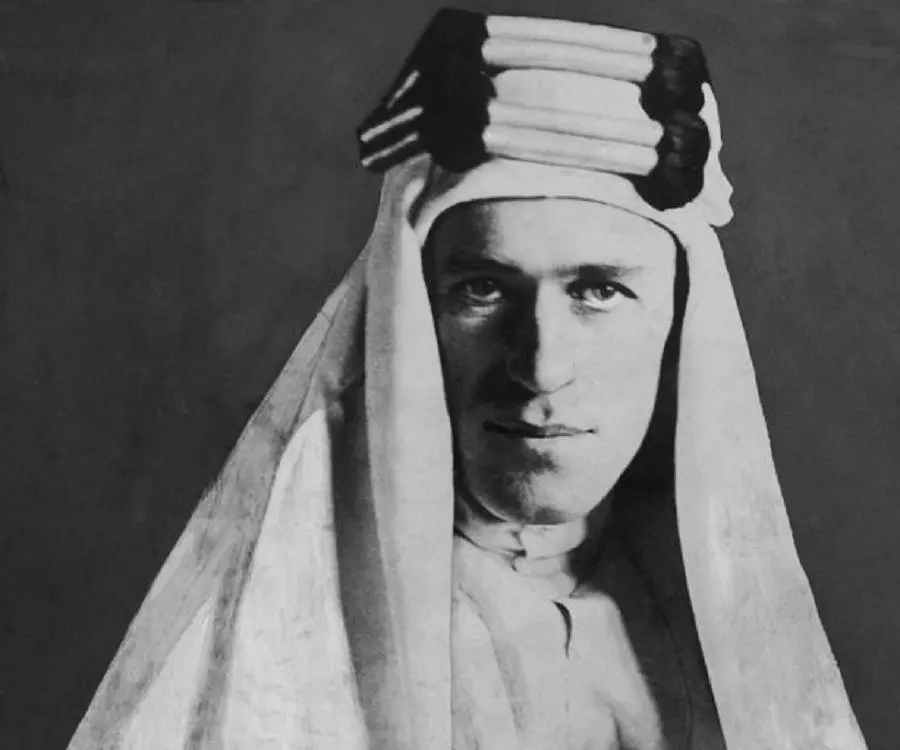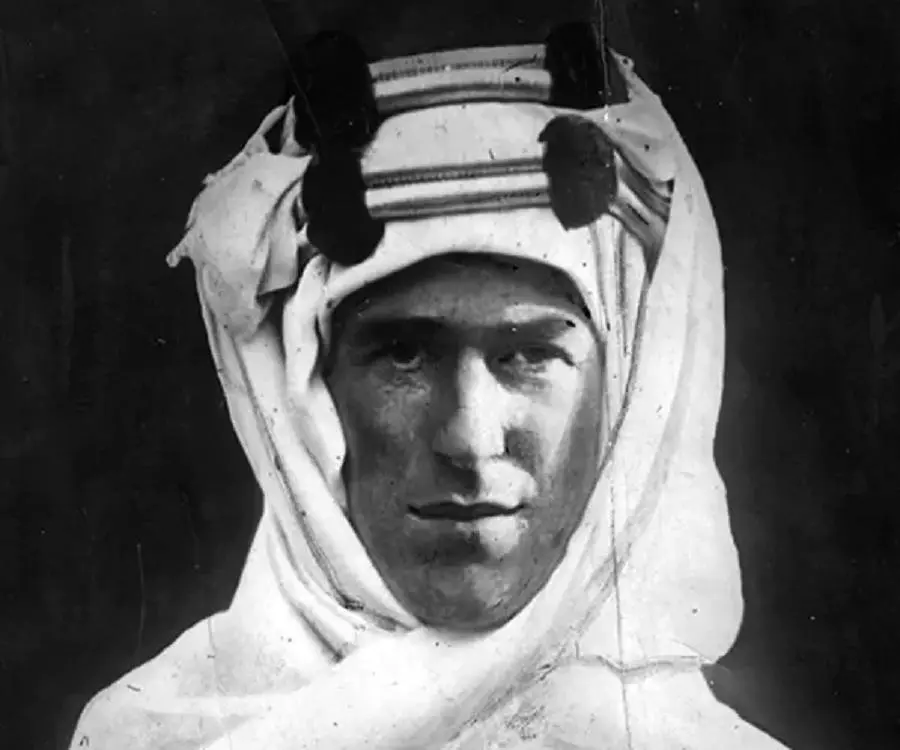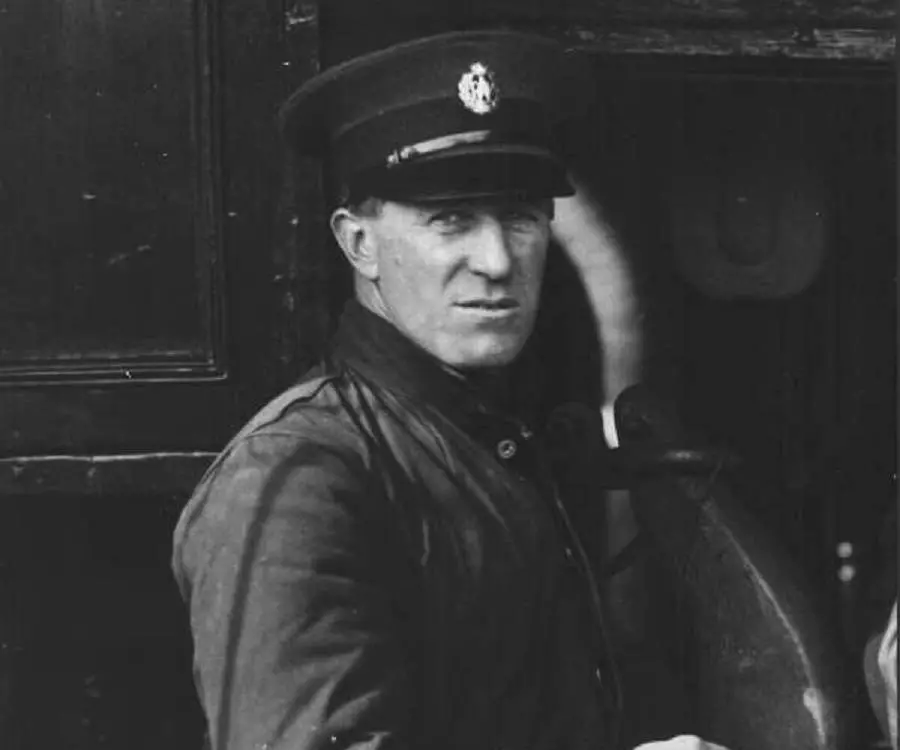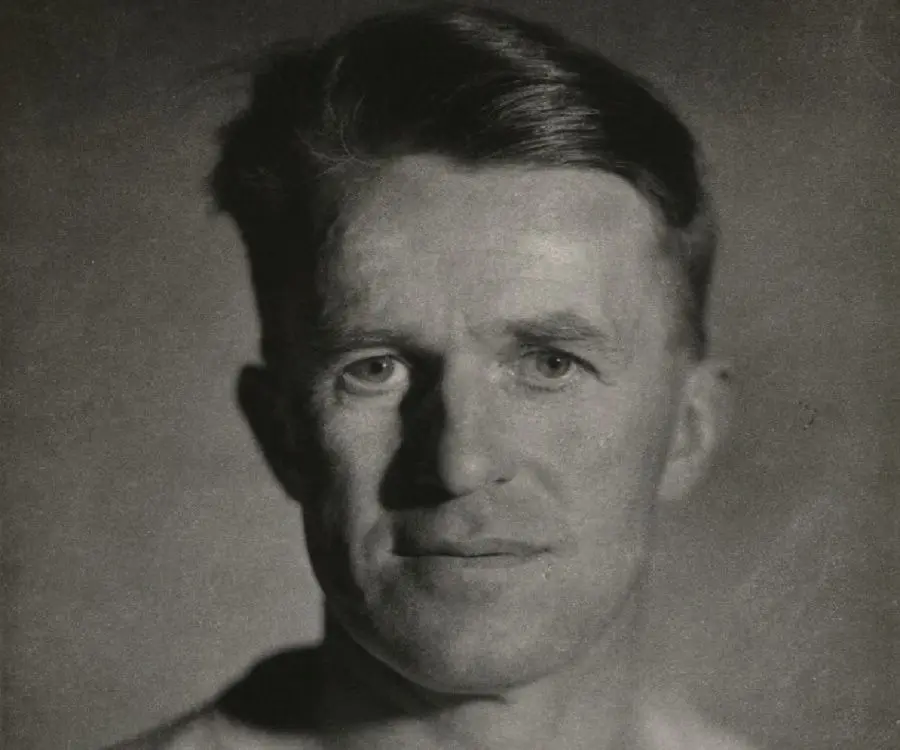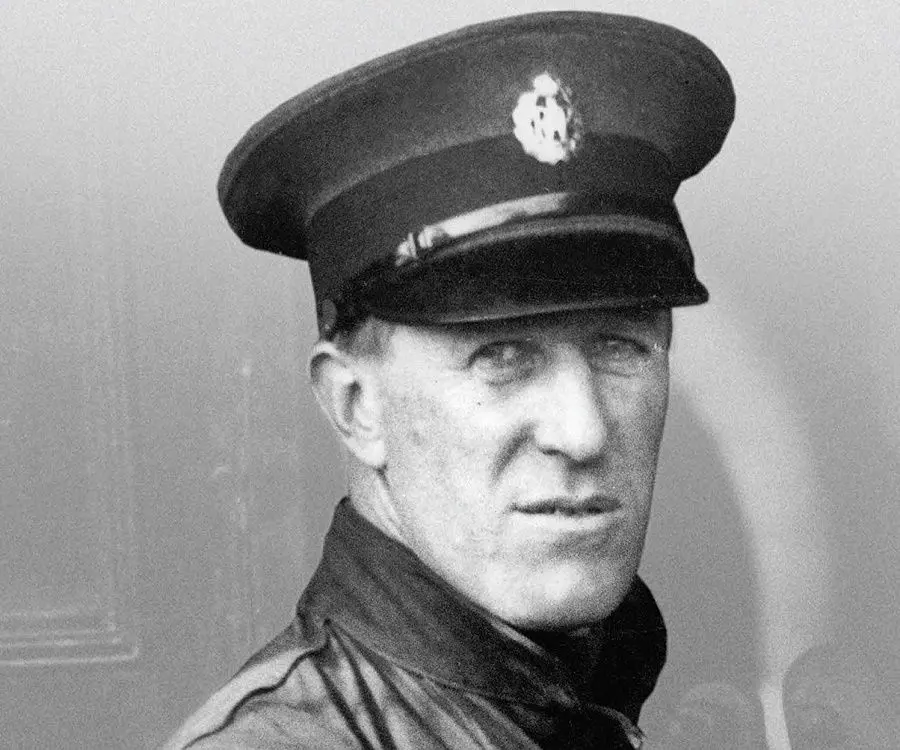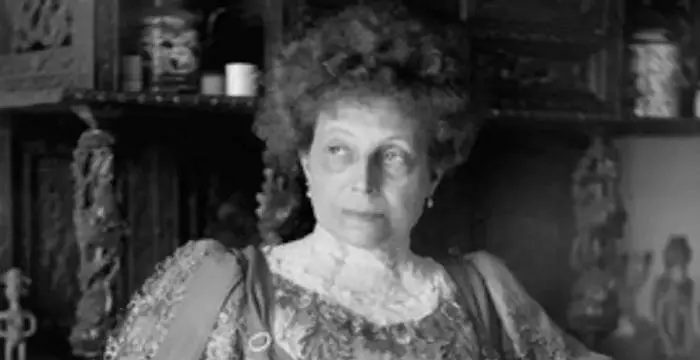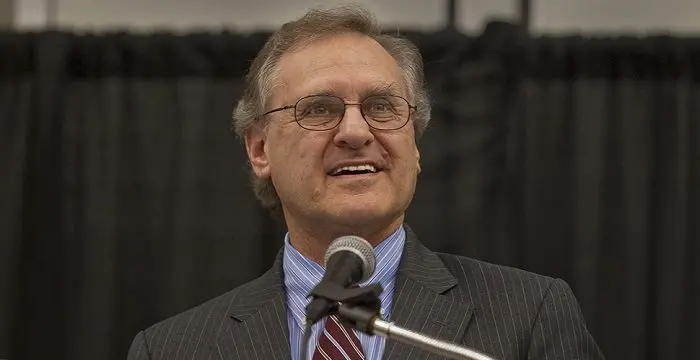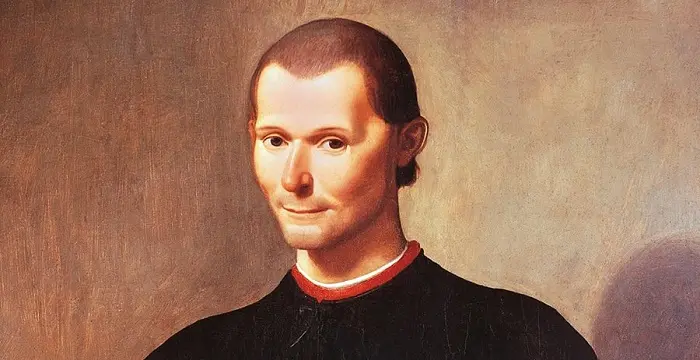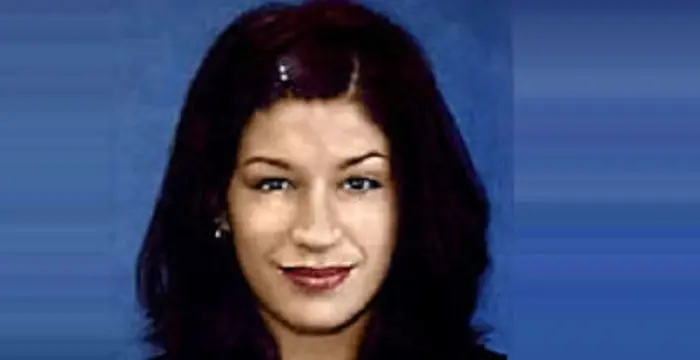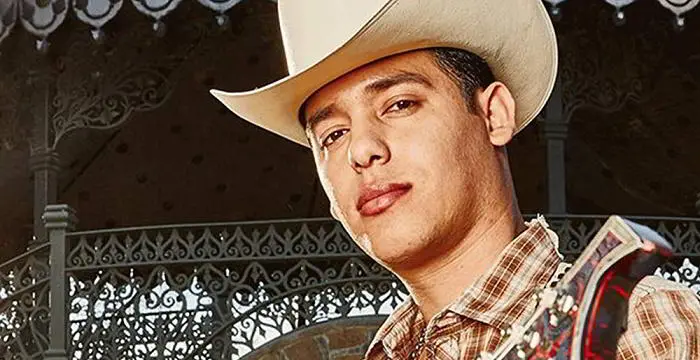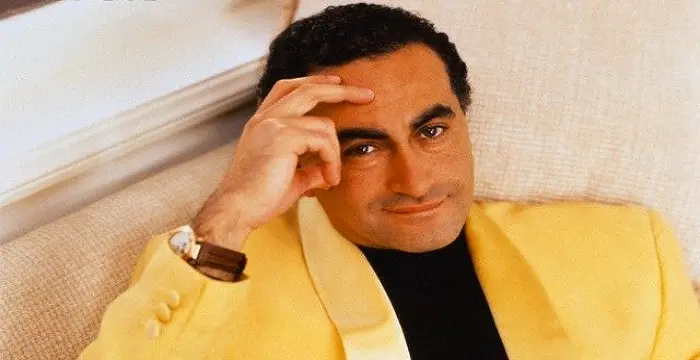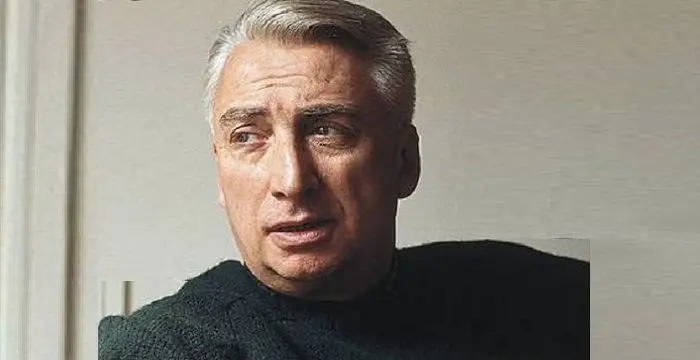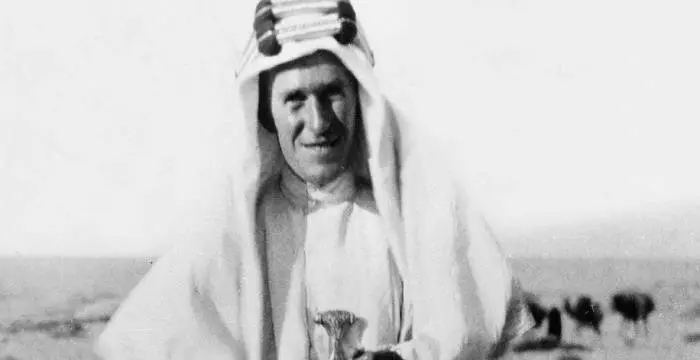
T. E. Lawrence - Intellectuals & Academics, Facts and Facts
T. E. Lawrence's Personal Details
Thomas Edward Lawrence, also known as TE Shaw, was a British archeologist, scholar, writer, military officer, strategist, and diplomat
| Information | Detail |
|---|---|
| Birthday | August 16, 1888 |
| Died on | May 19, 1935 |
| Nationality | British |
| Famous | Intellectuals & Academics, Archaeologists, Diplomats |
| Nick names | Lawrence of Arabia |
| Siblings | A.W. Lawrence |
| Known as | Colonel Thomas Edward Lawrence, Thomas Edward Lawrence, T. E. Shaw, John Hume Ross |
| Universities |
|
| Cause of death |
|
| Birth Place | Tremadog |
| Height | 166 |
| Gender | Male |
| Father | Sir Thomas Chapman |
| Mother | Sarah Junner |
| Sun Sign | Leo |
| Born in | Tremadog |
| Famous as | Archaeologist |
| Died at Age | 46 |
// Famous Archaeologists
Louis Leakey
Louis Leakey was a Kenyan-British anthropologist who findings greatly altered conceptions about the origins and course of the evolution of human life. This biography gives detailed information about his childhood, life, achievements and timeline.
V. Gordon Childe
Vere Gordon Childe was an Australian historian, linguist and archaeologist. This biography of Vere Gordon Childe provides detailed information about his childhood, life, achievements, works & timeline.
T. E. Lawrence's photo
Who is T. E. Lawrence?
Thomas Edward Lawrence, also known as TE Shaw, was a British archeologist, scholar, writer, military officer, strategist, and diplomat. He played a significant role in the ‘Great Arab Revolt’ against the Ottoman Empire during the First World War. His key performance in the Arab war earned him the title of the “Lawrence of Arabia,” which was also the title of a movie based on the war that took place around that time. His journey to the Arab war began when he traveled to Egypt after the beginning of the World War. From there, he was sent to Arabia for an intelligence mission. During this time, he got involved in issues of the Middle East and started working closely with Emir Faisal, the leader of the ‘Arab Revolt.’ As a liaison officer for the Arab forces, he led them to a stunning victory by striking the Turks and capturing cities such as Jerusalem and Jordan. After the war, he enlisted himself in the ‘Royal Air Force’ (RAF). This was the time when he wrote his well-known book ‘Seven Pillars of Wisdom,’ an account of the ‘Arab Revolt’ through his eyes. Lawrence died in a motorcycle accident in 1935.
// Famous Diplomats
Gertrude Bell
Gertrude Bell was an English writer and diplomat, who was highly influential in helping the British Empire exert its dominance in the Middle East. Check out this biography to know about her childhood, family life, achievements and fun facts about her
Stephen Lewis
Stephen Lewis is a Canadian politician, broadcaster, diplomat and professor. This biography profiles his childhood, career, works, life, achievements and timeline.
Niccolò Machiavelli
Niccolo Machiavelli was an Italian politician, historian and philosopher who is widely known as a founder of modern political science.
Childhood & Early Life
Thomas Edward Lawrence was born on August 16, 1888 in Tremadog, Carnarvonshire, Wales, to Sir Thomas Chapman and Sarah Junner. Sarah was the governess of Sir Thomas’s daughters.
Sir Thomas had left his wife, Edith, to be with Sarah. Sarah was the daughter of Elizabeth Junner and John Lawrence. Although Sir Thomas and Sarah did not marry, they lived together and used the surname “Lawrence.”
The couple had five sons, Edward being the second-eldest. Two of his brothers, Frank and Will, were killed in France in 1915 during World War I.
The family moved around a lot but finally settled down in Polstead Road, Oxford, in 1896. Lawrence attended the ‘City of Oxford High School for Boys’ and graduated in 1907.
His love for archaeology was such that he, along with his friend Cyril Beeson, cycled around the streets of Britain and studied the monuments and antiquities. Thereafter, they presented their discoveries to the ‘Ashmolean Museum.’ The museum stated in its annual report (1906) that Lawrence and his friend "by incessant watchfulness secured everything of antiquarian value which has been found.”
Lawrence attended ‘Jesus College’ in Oxford from 1907 to 1910 and earned a ‘First Class Honours’ degree in history.
In 1909, he visited Syria to study its historical settings. He also visited France to study its castles before submitting his final thesis, ‘The Influence of the Crusades on European Military Architecture—to the End of the 12th Century,’ which was published by the ‘Golden Cockerel Press’ as ‘Crusader Castles’ in 1936, after his death.
Early Career
From 1911 to 1914, he practiced being an archeologist in the Middle East. He acquired a travel fellowship to Carchemish, under DG Hogarth, who arranged it on behalf of the ‘British Museum.’
He became fascinated with the Middle East and its culture. In his free time, he often traveled to nearby villages to learn about the language of the people.
During this time, he also studied Arabic as he continued his work of excavation in different cities of the Middle East. He also moved to Syria for sometime, where he worked with Hogarth, R Campbell Thompson, and Leonard Woolley.
He once stated that he owed his career to Hogarth.
Career
When the war was declared, Lawrence was enlisted in the ‘British Army,’ but not immediately. He was initially part of the ‘General List,’ and it was only after he was summoned by historian and well-know archeologist Lt. Cmdr. David Hogarth to the ‘Arab Bureau’ intelligence unit in Cairo that he really got involved in the war.
His job in the bureau was to prepare maps, interview prisoners, and update the British generals via bulletins.
The ‘Arab Revolt’ began in June 1916. On October 16, 1916, Lawrence was sent to the Hejaz, as part of the British intelligence forces, to interview three of Sharif Hussein’s sons: Ali, Abdullah, and Faisal.
He stated that Faisal was the best-suited candidate to be the leader of the revolt. He started working closely with Faisal to map out ways in strengthening the position of the Arab forces and to prevent the Ottoman forces from weakening them.
He kept working with Faisal until the fall of Damascus in 1918. Around this time, Lawrence met the Arab people and convinced them to suspend the revolt until Faisal reached the outskirts of Damascus.
He also brought certain findings to his forces that were deemed to be valuable by the British intelligence agencies. He was also considered for a ‘Victoria Cross.’
He was simultaneously working with Faisal and the British intelligence forces. He divided his time between the British headquarters and Faisal’s forces, to keep up with their military actions.
Soon, it was about time that he permanently joined Faisal’s revolt against the Turks as a liaison officer. His hit-and-run-guerrilla operation was getting on the nerves of the Turks, who named a £5,000 reward for anyone who would capture him.
The prize was later extended to £20,000, but people’s loyalty was still with him. No Arab tried to turn him in. His first victory came when the Arab guerrilla forces seized the northernmost tip of the Red Sea, Aqaba.
Lawrence wrote in his account that he was captured by the Ottoman military and sexually abused by their guardsmen on November 20, 1917. However, scholars such as the author of ‘Setting the Desert on Fire: T E Lawrence and Britain's Secret War in Arabia 1916-1918,’ James Barr, claimed that the episode had never happened and was completely made up by Lawrence.
According to Lawrence, the incident took place in Dera'a. Damascus finally fell on October 1, 1918.
After the war ended, Lawrence was physically and emotionally exhausted and had various wounds all over his body. Although he wanted Arabia to be a full-fledged nation, the ‘Sykes-Picot Agreement’ between France and Britain removed all expectations of Arabia’s freedom.
Thereafter, he returned to London. After reaching London, Lawrence started to work for the ‘Foreign Office’ and also attended the ‘Paris Conference’ as a member of Faisal’s delegation.
Lowell Thomas’s photo show titled ‘With Allenby in Palestine’ was re-launched as ‘With Allenby in Palestine and Lawrence in Arabia,’ when he noticed that Lawrence’s photos, which showed him dressed as a Bedouin, had caught the public’s attention. The show became a hit in Arabia.
In 1921, Winston Churchill appointed him as an advisor, but Lawrence wished to join the ‘RAF.’ In 1922, Lawrence left his job and enlisted in the ‘RAF’ under the name “John Hume Ross.’
He left the ‘RAF’ in 1923 after his true identity was exposed. He changed his name again, and this time, it was “TE Shaw,” similar to his literary friend George Barnard Shaw’s name.
He desperately wanted to work for the ‘RAF’ again. He was eventually admitted again, in 1925. He finally bought a cottage at ‘Bovington Camp’ in Dorset and stayed there for the rest of his life.
Major Works
Lawrence was also a great writer and had written a number of books during his career. His most famous book, ‘Seven Pillars of Wisdom,’ is the account of his personal experience of the ‘Great Arab Revolt.’
He wrote the book during his seven-year research fellowship at ‘All Souls College’ in Oxford. The book was first published in 1926, and according to his promise, Lawrence did not take accept any money from the sales proceeds of the book.
Some of his other noteworthy books are ‘Revolt in the Desert’ (an abridged version of ‘Seven Pillars’), ‘The Mint’ (published posthumously), ‘The Odyssey of Homer’ (1932), and ‘The Wilderness of Zin’ (1914).
Awards & Achievements
Lawrence was awarded the French ‘Legion d’honneur’ and the ‘Distinguished Service Order.’ He was also made a ‘Companion of the Order of the Bath.’
He was appointed as the ‘Knight Commander of the Order of the British Empire,’ but he respectfully declined to accept it. He was also named one of the ‘100 Greatest Britons’ by ‘BBC.’
He was the main character of the 1984 manga ‘TE Lawrence.’ He has been the subject of a number of movies, series, and theater shows.
Personal Life & Legacy
Lawrence continued serving the military for the rest of his life. However, he left his beloved job two months before his fatal accident.
Lawrence loved riding motorcycles. He owned eight ‘Brough Superior’ motorcycles at different times in his life.
Unfortunately, he died in an accident while riding his ‘Brough Superior SS100’ motorcycle in Dorset. In order to save two boys on their bicycles, he swerved his motorcycle and was thrown over the handlebars.
After spending six days in hospital, Lawrence finally died on May 19, 1935.
There is no official record of Lawrence’s relationships. It is not known whether he was ever married or not.
// Famous Intellectuals & Academics
Bertil Gotthard Ohlin
Bertil Gotthard Ohlin was a famous Swedish economist. This biography profiles his childhood, family life & achievements.
Emily Greene Balch
Emily Greene Balch was an American economist, sociologist and pacifist who won the 1946 Nobel Peace Prize. This biography of Emily Greene Balch provides detailed information about her childhood, life, achievements, works & timeline.
Martin Buber
One of the greatest philosophers to have ever walked on earth, Martin Buber contributions to philosophy is a long-standing one. Explore all about his profile, childhood, life and timeline here.
T. E. Lawrence's awards
| Year | Name | Award |
|---|---|---|
Other | ||
| 0 | Knight of the Legion of Honour | |
| 0 | Croix de guerre 1914–1918 | |
| 0 | Companion of the Order of the Bath | |
| 0 | Distinguished Service Order | |
T. E. Lawrence biography timelines
- // 16th Aug 1888Thomas Edward Lawrence was born on August 16, 1888 in Tremadog, Carnarvonshire, Wales, to Sir Thomas Chapman and Sarah Junner. Sarah was the governess of Sir Thomas’s daughters.
- // 1896 To 1907The family moved around a lot but finally settled down in Polstead Road, Oxford, in 1896. Lawrence attended the ‘City of Oxford High School for Boys’ and graduated in 1907.
- // 1906His love for archaeology was such that he, along with his friend Cyril Beeson, cycled around the streets of Britain and studied the monuments and antiquities. Thereafter, they presented their discoveries to the ‘Ashmolean Museum.’ The museum stated in its annual report (1906) that Lawrence and his friend "by incessant watchfulness secured everything of antiquarian value which has been found.”
- // 1907 To 1910Lawrence attended ‘Jesus College’ in Oxford from 1907 to 1910 and earned a ‘First Class Honours’ degree in history.
- // 1909 To 1936In 1909, he visited Syria to study its historical settings. He also visited France to study its castles before submitting his final thesis, ‘The Influence of the Crusades on European Military Architecture—to the End of the 12th Century,’ which was published by the ‘Golden Cockerel Press’ as ‘Crusader Castles’ in 1936, after his death.
- // 1911 To 1914From 1911 to 1914, he practiced being an archeologist in the Middle East. He acquired a travel fellowship to Carchemish, under DG Hogarth, who arranged it on behalf of the ‘British Museum.’
- // 1914 To 1932Some of his other noteworthy books are ‘Revolt in the Desert’ (an abridged version of ‘Seven Pillars’), ‘The Mint’ (published posthumously), ‘The Odyssey of Homer’ (1932), and ‘The Wilderness of Zin’ (1914).
- // 1915The couple had five sons, Edward being the second-eldest. Two of his brothers, Frank and Will, were killed in France in 1915 during World War I.
- // Jun 1916 To 16th Oct 1916The ‘Arab Revolt’ began in June 1916. On October 16, 1916, Lawrence was sent to the Hejaz, as part of the British intelligence forces, to interview three of Sharif Hussein’s sons: Ali, Abdullah, and Faisal.
- // 1918He kept working with Faisal until the fall of Damascus in 1918. Around this time, Lawrence met the Arab people and convinced them to suspend the revolt until Faisal reached the outskirts of Damascus.
- // 1st Oct 1918According to Lawrence, the incident took place in Dera'a. Damascus finally fell on October 1, 1918.
- // 1921 To 1922In 1921, Winston Churchill appointed him as an advisor, but Lawrence wished to join the ‘RAF.’ In 1922, Lawrence left his job and enlisted in the ‘RAF’ under the name “John Hume Ross.’
- // 1923He left the ‘RAF’ in 1923 after his true identity was exposed. He changed his name again, and this time, it was “TE Shaw,” similar to his literary friend George Barnard Shaw’s name.
- // 1925He desperately wanted to work for the ‘RAF’ again. He was eventually admitted again, in 1925. He finally bought a cottage at ‘Bovington Camp’ in Dorset and stayed there for the rest of his life.
- // 1926He wrote the book during his seven-year research fellowship at ‘All Souls College’ in Oxford. The book was first published in 1926, and according to his promise, Lawrence did not take accept any money from the sales proceeds of the book.
- // 19th May 1935After spending six days in hospital, Lawrence finally died on May 19, 1935.
- // 1984He was the main character of the 1984 manga ‘TE Lawrence.’ He has been the subject of a number of movies, series, and theater shows.
// Famous Car Accident peoples
Brandon Burlsworth
Brandon Burlsworth was a football player who played for the Arkansas Razorbacks. Check out this biography to know about his childhood, family life, achievements and fun facts about him.
Jennifer Syme
Jennifer Syme was an American actress and personal assistant. Check out this biography to know about her birthday, childhood, family life, achievements, and fun facts about her.
Ariel Camacho
Ariel Camacho was a popular Mexican singer-songwriter. Check out this biography to know about his birthday, childhood, family life, achievements and fun facts about him.
Paul Walker
Paul Walker was an American actor famous for his starring role in ‘The Fast and the Furious’ franchise. This biography of Paul Walker provides detailed information about his childhood, life, achievements, works & timeline
Dodi Fayed
Dodi Fayed was an Egyptian heir and a film producer. Check out this biography to know about his childhood, family life, and fun facts about him.
Roland Barthes
Roland Barthes was a French literary theorist, critic and semiotician. This biography profiles his childhood, life, works, achievements and timeline.
T. E. Lawrence's FAQ
What is T. E. Lawrence birthday?
T. E. Lawrence was born at 1888-08-16
When was T. E. Lawrence died?
T. E. Lawrence was died at 1935-05-19
Where was T. E. Lawrence died?
T. E. Lawrence was died in Bovington Camp
Which age was T. E. Lawrence died?
T. E. Lawrence was died at age 46
Where is T. E. Lawrence's birth place?
T. E. Lawrence was born in Tremadog
What is T. E. Lawrence nationalities?
T. E. Lawrence's nationalities is British
What is T. E. Lawrence nick names?
T. E. Lawrence's nickNames is Lawrence of Arabia
Who is T. E. Lawrence siblings?
T. E. Lawrence's siblings is A.W. Lawrence
What was T. E. Lawrence universities?
T. E. Lawrence studied at Jesus College, Magdalen College, City of Oxford High School for Boys
What is T. E. Lawrence's cause of dead?
T. E. Lawrence dead because of Car Accident
How tall is T. E. Lawrence?
T. E. Lawrence's height is 166
Who is T. E. Lawrence's father?
T. E. Lawrence's father is Sir Thomas Chapman
Who is T. E. Lawrence's mother?
T. E. Lawrence's mother is Sarah Junner
What is T. E. Lawrence's sun sign?
T. E. Lawrence is Leo
How famous is T. E. Lawrence?
T. E. Lawrence is famouse as Archaeologist
